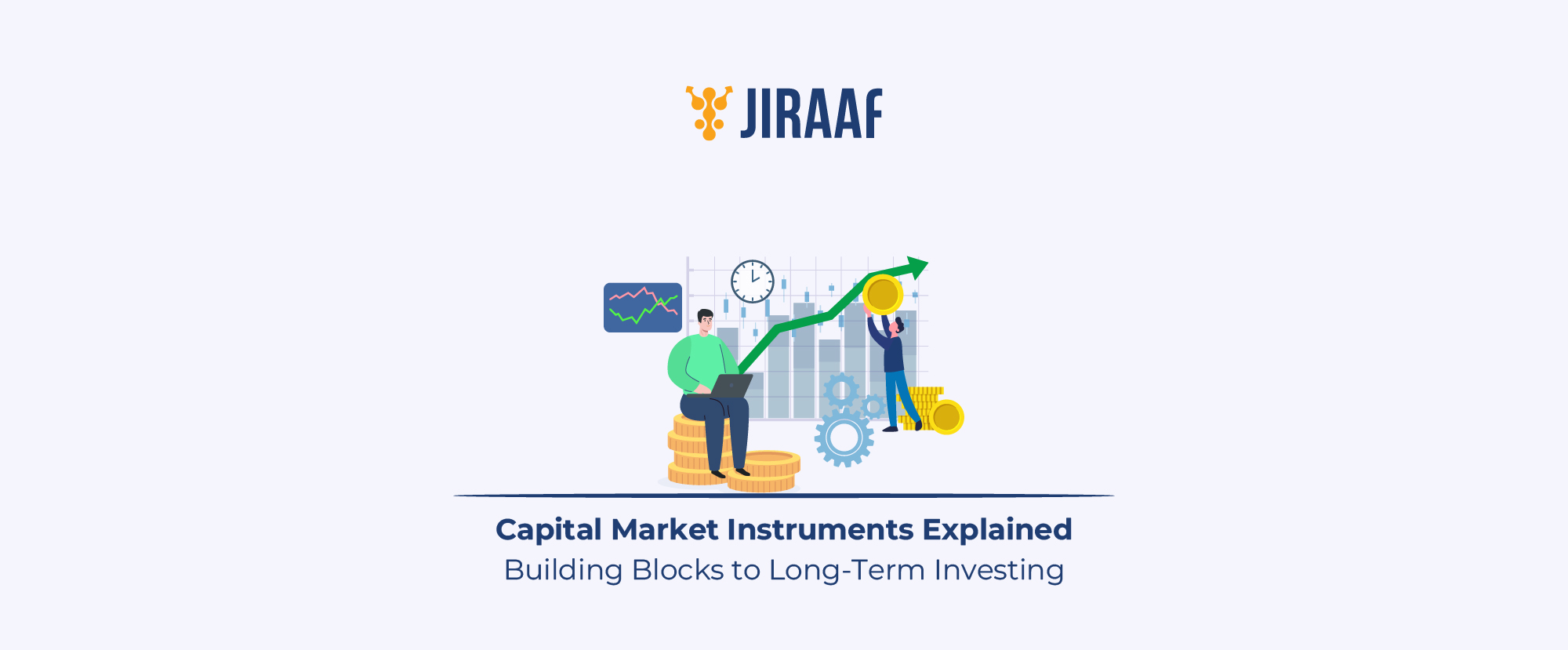Are you planning to sell a house or a piece of land you have held for years? The capital gains from such long-term assets often feel like a well-deserved reward for years of patience, effort, and planning. But just as you are about to enjoy those gains, a sizable portion of it is taken away by the long-term capital gains tax.
For many investors, this feels like watching your hard-earned wealth get trimmed overnight. The good news, however, is that there’s a smart, government-backed way to safeguard your profits by investing them in a special type of bonds. These bonds are called 54EC bonds or capital gain bonds.
In this blog, we’ll break down everything you need to know about 54EC Bonds, who issues them, who can invest, how they work, and much more. Let’s dive in.
What are 54EC Bonds?
54EC bonds, also known as capital gain bonds, help investors exempt Long-Term Capital Gains (LTCG) tax with some conditions. These bonds are issued under Section 54EC of the Income Tax ACT, 1961.
54EC bonds come with a fixed lock-in period of five years. Exiting before maturity can attract long-term capital gains tax on your principal, while the interest you earn is always taxable as per your income slab. Also, the maximum amount allowed to invest in these bonds as per the Finance Act of 2014 is ₹50 lakh in a financial year.
To be exempted from the LTCG, you have to reinvest the capital gains earned from the sale of your immovable assets such as land, building or both. However, you must hold those assets for 2 years before selling and you have to reinvest the gains in 54EC bonds within 6 months of sale.
All of this information can get overwhelming to grasp in one go, so let us discuss each of the unique features of 54EC bonds one by one for better understanding.
Features of 54EC Bonds
- Lower Default Risk: Issued by government-backed PSUs and rated AAA, these bonds carry an extremely low probability of default.
- Accessible Entry Point: You can begin investing with as little as ₹10,000, making them approachable for a wide range of investors.
- Non-Transferable Nature: Once purchased, these bonds cannot be transferred, traded, or sold in the secondary market until maturity.
- Tax Treatment: While the interest earned is fully taxable as per your income slab, no TDS is deducted.
- Investment Limit: An individual can invest up to ₹50 lakh (or 500 bonds) in a financial year, as specified under the Finance Act, 2014.
These features make 54EC bonds a highly secure and disciplined investment avenue. However, there is an eligibility criterion for investing in these bonds. Let’s discuss it.
Who Can Invest in 54EC Capital Gain Bonds?
A taxpayer who is liable to pay long-term capital gains tax can invest in 54EC bonds including:
- Resident and Non-Resident Individuals
- Hindu Undivided Family (HUF)
While other entities such as corporations, partnership firms and trusts are not eligible to invest in these bonds.
Authorized PSUs Offering 54EC Bonds
Not every institution is permitted to issue 54EC bonds. As per the Income Tax Act, only select government-backed public sector undertakings (PSUs) are authorized to raise funds through these instruments.
These are:
- Rural Electrification Corporation Limited (REC): A ‘Navratna’ PSU under the Ministry of Power, REC provides loans to state electricity boards and utilities for rural electrification. It offers AAA-rated bonds with regular annual interest payments.
- Power Finance Corporation Limited (PFC): Government-owned PFC finances India’s entire power sector, supporting generation, transmission, and distribution. It issues capital gain bonds that fund utilities while providing investors with secure, tax-saving opportunities.
- Indian Railway Finance Corporation Limited (IRFC): IRFC mobilizes domestic and international funds to finance railway infrastructure and rolling stock. It allows investors to support India’s railway modernization while benefiting from tax exemptions.
- Housing and Urban Development Corporation Limited (HUDCO): Recently added under Section 54EC, HUDCO issues bonds for housing and urban infrastructure projects.
You can download form for 54 EC Bonds from the links below.
- PFC 54 EC Download form – Click here
- IRFC 54 EC Download form – Click here
- REC 54 EC Download form – Click here
- HUDCO 54 EC Download form – Click here
Before we discuss the process of investing in 54EC bonds, let us take a look at the pros and cons of investing in these bonds.
Pros and Cons of Investing in 54EC Bonds
Like every other investment instrument, 54EC bonds come with advantages as well as disadvantages. Let’s take a look.
Pros
- Tax Exemption: Investment in 54EC bonds allows you to claim exemption on long-term capital gains, reducing your overall tax liability.
- Lower Risk of Default: Being issued by government-backed PSUs and rated AAA, these bonds carry minimal default risk.
- No TDS: Interest income is taxable as per your slab, but no TDS is deducted.
Cons
- Liquidity: With a mandatory five-year lock-in period, you have to keep your money parked in these bonds to avail tax exemption.
- Lower Returns: The fixed interest rate, typically around 5-6% p.a., is modest compared to other investment avenues.
Now that we have discussed the different available types of 54EC bonds, its pros as well as cons, the next natural step is to know about how to invest in these bonds.
How to Invest in 54EC Bonds in India
54EC bonds are not listed on stock exchanges, so you need to apply directly through the issuing PSUs or authorised collection channels. Here’s how you can invest:
Step 1: Choose the Issuer
You can check the issuer’s official website or authorised intermediaries for current investment windows and decide which PSY bond you want to invest in.
Step 2: Download and Fill the Application Form
Download the respective bond application form from the issuer’s website. Fill in your personal details, including PAN, Aadhaar, bank account information, and the investment amount. Ensure all required documents, such as ID proof, address proof, a cancelled cheque, and a passport-sized photograph, are attached.
Step 3: Make the Payment
Payments can be made via demand draft, account payee cheque, or electronic transfer (NEFT/RTGS). If paying online, note the transaction reference number (UTR/URN) on your application form.
Step 4: Submit the Application
You can submit the completed form along with the payment and supporting documents either at designated bank branches or through authorised online platforms offering a paperless process.
Step 5: Receive Allotment
After processing, the issuer will confirm your investment. Bonds are issued either in physical form, with a certificate mailed to you, or in demat form, credited directly to your account.
Conclusion: Should You Choose 54EC Bonds for Tax Saving?
If you’re realizing long-term capital gains from assets like land and building held for more than two years, and you don’t need access to that money for the next five years, 54EC bonds give you a reliable way to protect your gains.
These bonds offer an average return of around 5-6% p.a. While these returns may not compete with equity or other investment instruments, they keep your money at par with inflation. Furthermore, investing in these bonds helps you preserve your realized gains that would otherwise be reduced by the 12.5% long-term capital gains tax.









